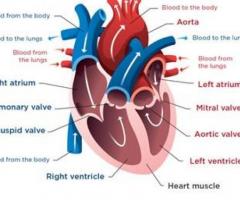Ebstein’s disease is referred to as a defect of the heart that is rare and is present from birth. It is a kind of malformation in which some parts of the tricuspid valve are abnormal and do not work properly. Tricuspid valve is the valve that is situated between the two chambers of the heart, the right atrium and right ventricle. As a consequence of the damaged tricuspid valve, there may be some blood leakage from the valve, affecting the functioning of the heart. The size of the heart may further be enlarged, causing a heart failure. Quite frequently, this malformation may induce the tricuspid valve to forgo blood in a backward position into the right atrium, while the right ventricle squeezes. This backward...
Ebstein’s disease is referred to as a defect of the heart that is rare and is present from birth. It is a kind of malformation in which some parts of the tricuspid valve are abnormal and do not work properly. Tricuspid valve is the valve that is situated between the two chambers of the heart, the right atrium and right ventricle. As a consequence of the damaged tricuspid valve, there may be some blood leakage from the valve, affecting the functioning of the heart. The size of the heart may further be enlarged, causing a heart failure. Quite frequently, this malformation may induce the tricuspid valve to forgo blood in a backward position into the right atrium, while the right ventricle squeezes. This backward flow increases the force in the right atrium which leaves the foramen ovale exposed. Such a condition causes deoxygenated blood to pass from the right atrium to the left atrium, moving directly to the parts of the body.
Ebstein’s disease is known as the deformity of the tricuspid valve and is marked by various factors such as the rearrangement of the functional annulus in a downward position, extension of the atrialised part of the right ventricle with some degree of thinning of the wall, dismissal of the frontal leaflet, and expansion of atrioventricular junction.



